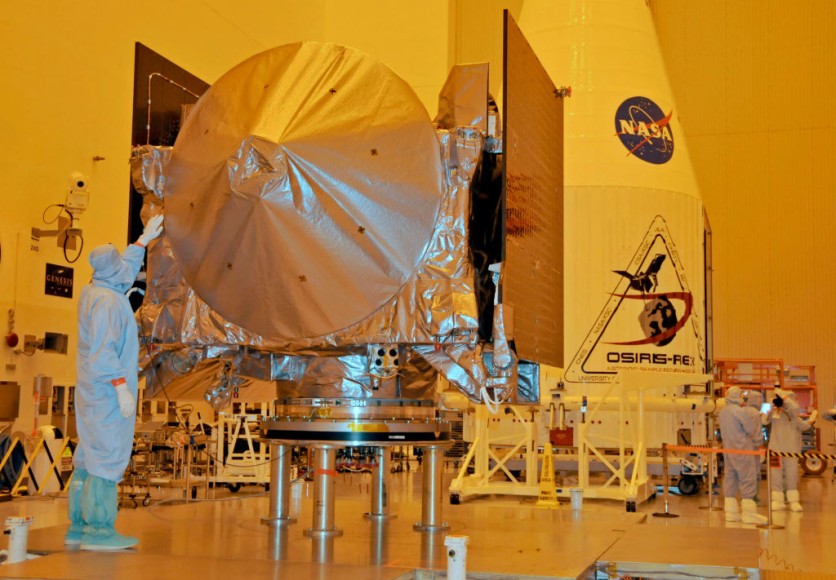NASA OSIRIS-REx (Origins, Spectral Interpretation, Resource Identification, and Security-Regolith Explorer) mission sample collection has revealed the sub-surface of asteroid Bennu. Around 250 grams of samples were collected, which will arrive on Earth in 2023, where they will undergo laboratory analysis.

The spacecraft was also analyzed, specifically the forces it experienced due to the low gravity of Bennu that resulted in a granular surface bed with weak cohesion between particles, according to SciTechDaily.
It took around two years for the spacecraft to survey Bennu. Asteroid Bennu is about 500 meters in diameter. The mission team chose a site within a 20-meter crated, which is nicknamed Nightingale.
It was in October 2020 when the spacecraft collected the surface via the Touch-and-Go Sample Acquisition Mechanism (TAGSAM). Once the TAGSAM made contact, it sank into the surface and released a jet of nitrogen gas that mobilized sub-surface material and guided it into a collection chamber.
The process produced a debris plume and an elliptical crater that is 9 meters long.
Also Read: NASA's OSIRIS-Rex Mission: Bennu Asteroid Seems to Have Cavities, Might Be Close to Its Death
The Findings
Scientists analyzed imaging and spectral data taken during and after the retrieval of the sample. They found that the sub-surface material is darker and has more fine particles than the overlying surface.
They also investigate the physical properties of the material up to 10 centimeters below the asteroid's surface with the use of images and accelerometer data. The team reconstructed the exerted forces on the spacecraft in a short period between when it first made contact with the astroid's surface and when it released the nitrogen gas.
What they found is that the near-subsurface material is loosely packed and less dense than the average of the whole asteroid with very low cohesion. It is extremely porous with low material strength that enables dust and other small particles to move within the sub-surface of Bennu.
The Purpose Behind Asteroid Research
Asteroids are like "time capsules" composed of materials from the earliest stages of the solar system. They are the leftover material from the formation of the solar system that can tell us about the early processes that shaped the solar system.
According to space.com, there is a dramatic increase in the number of near-Earth asteroids that have been discovered in recent years. In fact, there are approximately 16,000 near-Earth asteroids have been identified. The discovery of these asteroids poses threats to our planet, especially those that are bigger than Bennu.
Asteroid Bennu is actually a perfect example of why more asteroids need to be studied to determine the exact extent of their risks.
Also, scientists are saying that Bennu is an ancient relic from the beginning of our solar system. They said that Bennu's history is much more ancient than the Earth.
Related Article: Asteroid Bennu: What NASA Knows About the Most Studied Space Rock Ever
This article is owned by TechTimes
Written by April Fowell
ⓒ 2025 TECHTIMES.com All rights reserved. Do not reproduce without permission.




